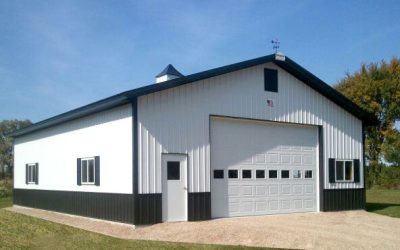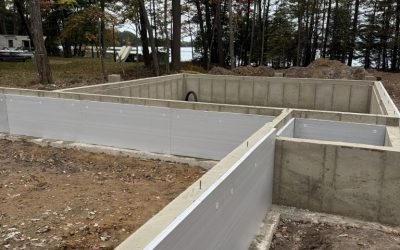Many people — builders and homeowners alike — consider spray foam to be the gold standard in insulation technology. However, at RVI, we believe there is a better insulation option for our climate — and we feel it’s important to educate our clients on the limitations of spray foam.
In today’s blog, we discuss some of the little-known cons of spray foam insulation.
What Are the Drawbacks of Spray Foam Insulation?
Spray foam insulation, formally known as spray polyurethane foam, has been in use since 1986. For many years (and perhaps still), it was considered the best option for building insulation.
Unlike batt insulation, the characteristics of spray foam mean it fills every cavity and creates a tight, impermeable barrier. When spray foam is installed correctly, it performs quite well.
The keyword here, however, is “correctly” — and there are more nuances to spray foam insulation application than you may think.
First, there is the issue of climate. Here in the northern Midwest, we see our share of both hot, humid summers and bitterly cold winters. These drastic swings in temperature are hard on spray foam, especially if it was not installed in ideal conditions.
It’s important to know that spray foam needs to be installed on a dry, warm substrate (surface). If it’s too hot or humid, the foam may not adhere correctly. If it is too cold, the foam may shrink. And if it’s not fully adhered to or has pulled away from the substrate, you’re left with gaps. And even small gaps can lead to durability issues. Gaps in the foam will lead to moisture issues, as condensation can form on the under-insulated spaces.
Spray foam also needs to be installed with relatively uniform thickness. Its R-value is significantly decreased if the depth of the product varies too much.
The climate of the upper Midwest poses another potential issue to spray foam performance. The extreme temperature swings we face cause expansion and contraction of the building components. This can eventually lead to gaps and cracks, decreasing the effectiveness of the insulation.
Another issue with spray foam is the potential health risks it poses. Spray foam is a form of polyurethane, which is made from non-renewable crude oil derivates.
Polyurethane contains isocyanates, which, according to the CDC “are powerful irritants to the mucous membranes of the eyes and gastrointestinal and respiratory tracts.” The most risk is posed to the installer, and proper protective gear eliminates most of the hazards. However, if the spray foam is ever cut into, trimmed, or otherwise disturbed, the dust can irritate eyes and lungs.
Alternative to Spray Foam Insulation
We still think spray foam has its uses, and we do install it sparingly — for instance, when filling in around rim joists.
However, at RVI we prefer to install the Blow-In-Blanket® system (BIBS®). BIBS is a proprietary, high-performance insulation system that uses fiberglass wool. The wool is blown into walls, floors, attics, and cathedral ceilings, forming a seamless blanket of insulation that fills in around pipes, wires, and other objects. This creates a thermal envelope and makes the building energy-efficient, tight, and healthy.
The sand used to make fiberglass is a plentiful, natural, renewable resource. Fiberglass is also manufactured utilizing recycled glass. In fact, BIBS originates in factories using 29 – 100% post-consumer products.
BIBS is also free of formaldehyde, inks, and binders. This makes it a cleaner, safer, more environmentally sound alternative to petroleum-derived polyurethane foams.
Contact Us To Learn More About Insulation Services in Rhinelander
If you are a homeowner who’d like to cut down on energy costs, or a builder who wants to offer their clients the most efficient new builds possible, call RVI. Our team can look at your project and guide you to make the best insulation choice for your purposes.
And no matter what products we’re installing, you’ll know that the work is being completed by our team of professionals that specialize in the correct, safe application of insulation products. Our work is performed by us — no subcontractors — and it’s 100% satisfaction guaranteed.
If you are in the Northern Wisconsin or Rhinelander area, contact us today to learn more about how RVI and BIBS® insulation can create comfortable, cost-effective, and environmentally sound structures.



